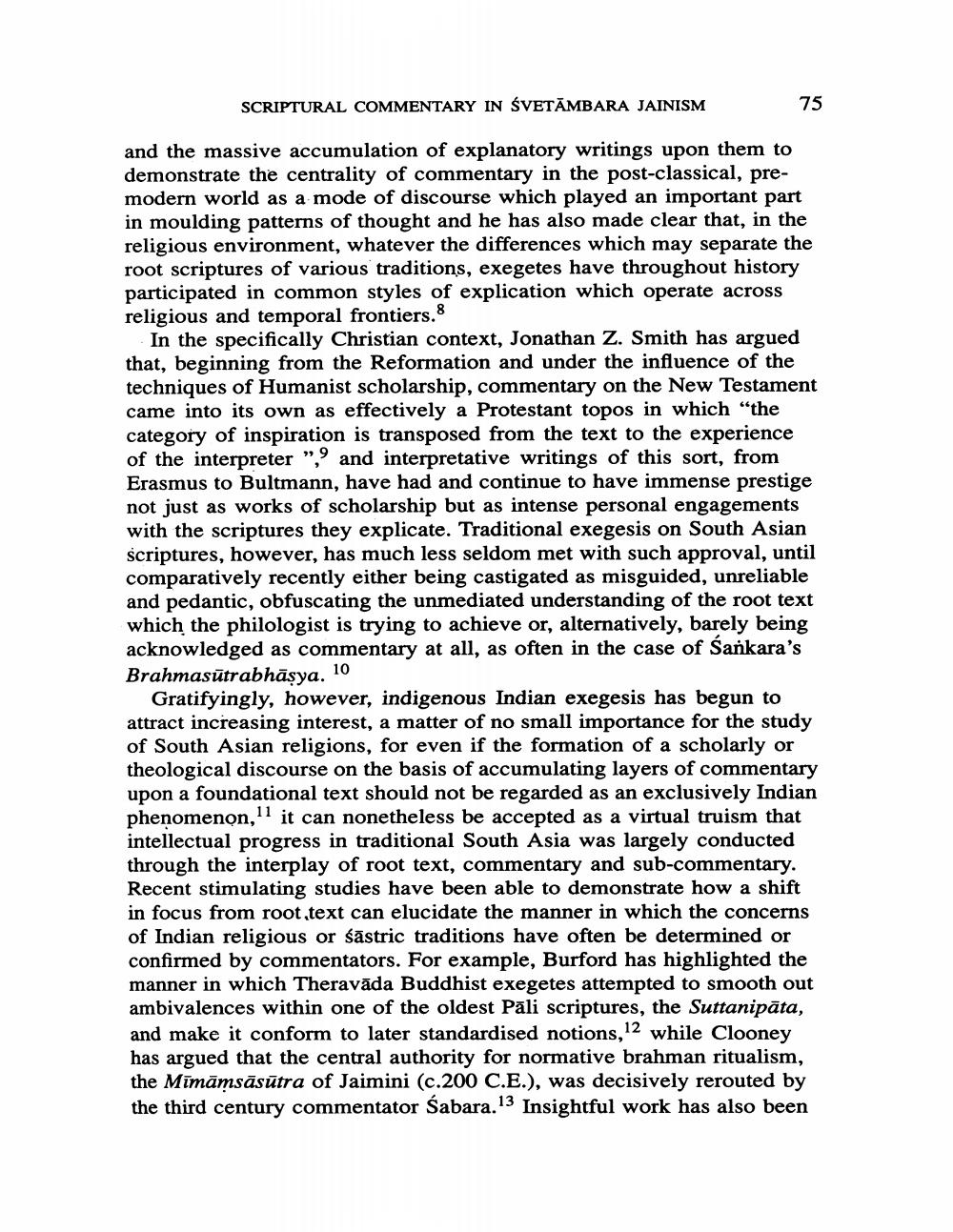Book Title: Somnolent Stras Sriptural Cmmentary In Svetambara Jainism Author(s): Paul Dundas Publisher: Paul Dundas View full book textPage 3
________________ SCRIPTURAL COMMENTARY IN ŚVETĀMBARA JAINISM 75 and the massive accumulation of explanatory writings upon them to demonstrate the centrality of commentary in the post-classical, premodern world as a mode of discourse which played an important part in moulding patterns of thought and he has also made clear that, in the religious environment, whatever the differences which may separate the root scriptures of various traditions, exegetes have throughout history participated in common styles of explication which operate across religious and temporal frontiers.8 In the specifically Christian context, Jonathan Z. Smith has argued that, beginning from the Reformation and under the influence of the techniques of Humanist scholarship, commentary on the New Testament came into its own as effectively a Protestant topos in which “the category of inspiration is transposed from the text to the experience of the interpreter”,9 and interpretative writings of this sort, from Erasmus to Bultmann, have had and continue to have immense prestige not just as works of scholarship but as intense personal engagements with the scriptures they explicate. Traditional exegesis on South Asian scriptures, however, has much less seldom met with such approval, until comparatively recently either being castigated as misguided, unreliable and pedantic, obfuscating the unmediated understanding of the root text which the philologist is trying to achieve or, alternatively, barely being acknowledged as commentary at all, as often in the case of Sankara's Brahmasūtrabhāsya. 10 Gratifyingly, however, indigenous Indian exegesis has begun to attract increasing interest, a matter of no small importance for the study of South Asian religions, for even if the formation of a scholarly or theological discourse on the basis of accumulating layers of commentary upon a foundational text should not be regarded as an exclusively Indian phenomenon, it can nonetheless be accepted as a virtual truism that intellectual progress in traditional South Asia was largely conducted through the interplay of root text, commentary and sub-commentary. Recent stimulating studies have been able to demonstrate how a shift in focus from root text can elucidate the manner in which the concerns of Indian religious or śāstric traditions have often be determined or confirmed by commentators. For example, Burford has highlighted the manner in which Theravāda Buddhist exegetes attempted to smooth out ambivalences within one of the oldest Pāli scriptures, the Suttanipāta, and make it conform to later standardised notions, 12 while Clooney has argued that the central authority for normative brahman ritualism, the Mīmāmsāsūtra of Jaimini (c.200 C.E.), was decisively rerouted by the third century commentator Sabara.13 Insightful work has also beenPage Navigation
1 2 3 4 5 6 7 8 9 10 11 12 13 14 15 16 17 18 19 20 21 22 23 24 25 26 27 28 29
